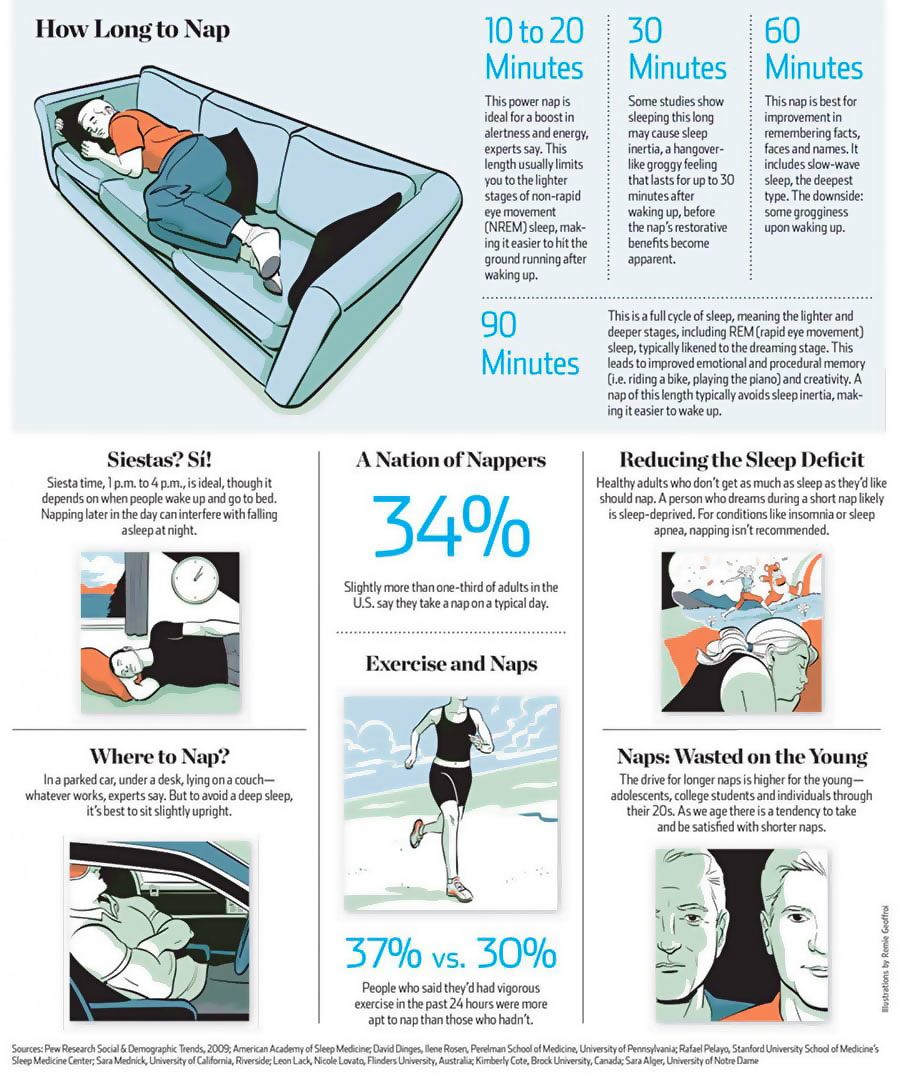A study has discovered that individuals taking advantage of a daytime nap were more likely to experience a noticeable blood pressure reduction in comparison to those who didn’t take a daytime nap. A daytime nap seems to reduce blood pressure levels the same amount as other lifestyle changes such as a reduction in alcohol or salt, which can reduce blood pressure levels by 3 – 5 mm Hg. As a comparison, a low-dose blood pressure medication normally reduces blood pressure levels by 5 – 7 mm Hg.[1]
A daytime nap was associated overall with an average 5 mm Hg reduction in blood pressure, which according to the researchers is equivalent to other blood pressure-reducing intervention results. Also, average systolic blood pressure over 24 hours was reduced by 3 mm Hg for each 1 hour of midday napping. A reduction in blood pressure as little as 2 mm Hg can lower the risk of heart attack and other cardiovascular events by as much as 10%.
This study assessed the affect of midday napping on blood pressure levels in individuals with reasonably controlled blood pressure. The researchers previously found an association between daytime naps and a reduction in blood pressure in individuals having very high blood pressure levels. The more pronounced any effort to reduce blood pressure levels will appear when they are already high. Any significant blood pressure level differences will likely be due to napping with the inclusion of individuals with reasonably well-controlled blood pressure.
Study participants were 212 male and female individuals with an average age of 62 having an average blood pressure of 129.9 mm Hg. Approximately 1 in 4 had Type 2 diabetes and/or were smokers. They were divided into 2 groups, a napping group and a non-napping group, which were both similar with regards to heart disease risk factors excepting that the napping group had more smokers.
Blood pressure was consecutively recorded and assessed for 24 hours, as well as midday nap time, lifestyle habits such as physical activity levels, alcohol intake, salt and coffee consumption, and an artery stiffness measurement known as pulse wave velocity. Each individual wore an ambulatory blood pressure monitor for measuring and tracking blood pressure regularly instead of just once off in the clinic. When the participants were recruited for the study, they also had an echocardiogram, an ultrasound of the heart showing its function and structure.
Factors known for influencing blood pressure levels were adjusted for, which included gender, age, lifestyle and medications. There weren’t any differences with regards to the number of blood pressure medications taken between the 2 groups, and echocardiograms and pulse wave velocity tests were also similar. Although both groups received the same amount of medication, the group that had napped during midday still experienced a significant reduction in blood pressure.
The average systolic blood pressure over 24 hours was overall 5.3 mm Hg lower in individuals who napped in comparison to individuals who didn’t nap (127.6 mm Hg vs 132.9 mm Hg). Individuals who had daytime naps had more favorable blood pressure readings when both numbers were looked at (128.7/76.2 vs 134.5/79.5 mm Hg).
The study participants’ average nap time duration was 49 minutes.

Image Source – wsj
Save
Save
Save